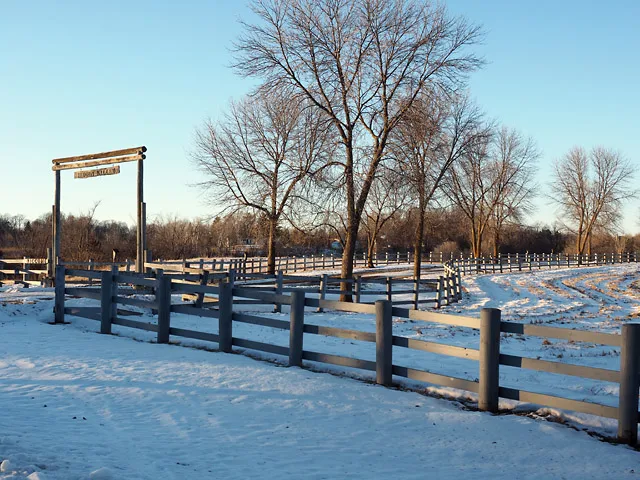A Walk Around The Block
Across the road (it's wrong to call it a "street"), a stand of Quaking Aspen, Populus tremeloides. These are roughly forty feet tall, and maybe thirty years old. The trees grow in clonal stands, suckering off roots from the initial seedling. These stands can go on for hundreds or thousands of years if fire burns through at supportive intervals. The bark color can vary depending on the region, but in our locality they trend toward the white of a Paper Birch.
Our five mile walk around "the block" takes us by several properties with horses. That tells you something about the nature of the neighborhood (please don't feed the puns). The lots are large, generally over ten acres, many with rolling meadows and wetland basins (but little standing water). Taxes are high (but not by New Jersey standards), and there are probably property tax credits for agricultural uses ("Green Acres"). When you are this close to the city and agricultural, you need resources, you need to make the land "productive" or you will pay. The pressure to change the zoning is real and looming. Another post, another day, about what I call the development shadow.
Given such low-density zoning in this part of the "city," you'll find fairly long views often punctuated by a fairly large house.
You may also find a property named to conjure up salad dressing.
There's a little, err Long, lake, a remnant of a much longer lake, hemmed in by two fingers, one of which is a pronounced esker. In the distance, two blue ice-houses.
In winter we can walk (or drive) on the lake. In the distance you can see the road cut, traveling up the esker at its junction with the other ridge that encloses this body of water.
On this side, three fifths around the block, more horses and a varied, glacially-sculpted terrain.
The late sun gives glow to tilled acres and woods alike.
The cedars that grow on open, upland sites burn with the setting sun.
As do red houses.
To the northwest, some fields open to cultivation and livestock.
More rare, a field's infrastructure. This was dairy country awhile back.
Now, an attempt at viticulture.
To the west of our place, a partially-filled, old gravel pit has become a horse boarding operation. Rex had questions about how the open pit affected the hydrology of the area, and now that it is filled, more so. From what I've seen, and what I read, we have a complex hydrology, to be expanded in a later post.
Along the county road at dusk, about a half mile from our place, a stand of last season's weeds.















Comments
Post a Comment
Go ahead and comment! I will moderate and delete the spam. Thx